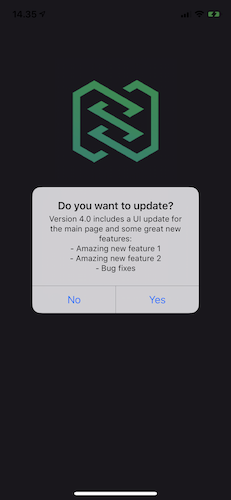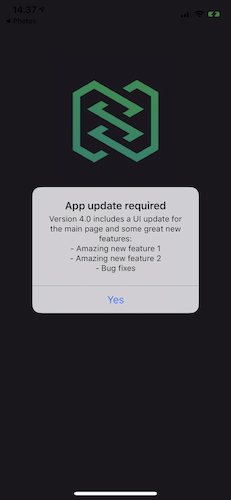Version control
Using the version control feature of NStack you can inform the user that a new version of the app is available.
There are a few ways you can configure how the user should interact and be informed about the new version:
Update mode:
-
"Off" - The user will not be prompted with the update dialog.
-
"On" - The user will be prompted with the update dialog on app open. But can decide to say no to the update, 24h later they will see the dialog again.
- When selecting "Yes" the App Store will be opened on the apps page where the user can update the app.
- When selecting "No" the dialog will be dismissed and the app resumes as normal.

-
"Force" - The user will be prompted with the update dialog on app open, Which they cannot close. They are forced to update the app.
- When selecting "Yes" the App store updates screen will be opened.

New in version:
- "Yes" - If the app has been auto-updated, we will show a dialog with the change log on the next app open.

- "No" - No dialog will be shown after an auto-update.
Change log:
In the change log you can list all the new features, bug fixes or UI updates that are present in the new app and need to be presented to the user.
File (Android):
You can upload a file to the new version, this is mainly used when releasing an Android app outside of the Google play store using a .apk file.
Text:
The title and button texts used in the popups can be configured in the localisation section of the app on the "Nstack(system)" platform.
You can find examples on how to implement Version Control for the following platforms: